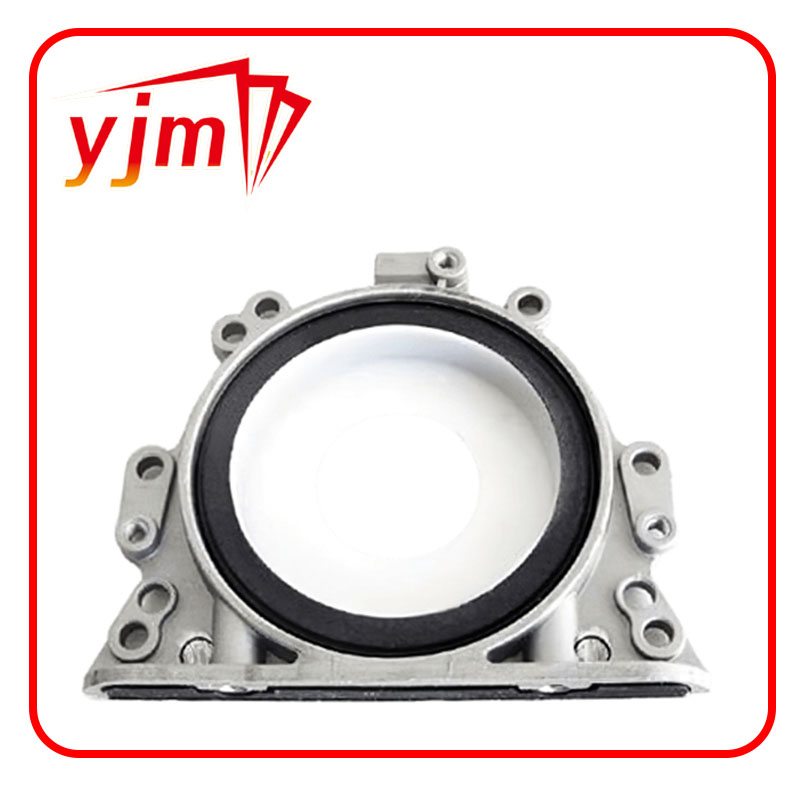stuffing box shaft seal
Understanding Stuffing Box Shaft Seals
In various industrial applications, the efficiency and integrity of machinery are critical for optimal performance. One essential component that plays a vital role in maintaining this integrity is the stuffing box shaft seal. This device is crucial for preventing leakage of fluids and maintaining pressure within rotating shafts in applications ranging from pumps to turbines.
What is a Stuffing Box Shaft Seal?
A stuffing box shaft seal is a mechanical assembly designed to seal the space between a stationary and a rotating component. It is primarily used to manage and contain lubrication fluids or process fluids within equipment while minimizing leakage to the environment. The term stuffing box originates from the practice of 'stuffing' the box assembly with packing materials to create a tight seal.
Components and Functionality
Typically, a stuffing box seal consists of several components
1. Packing Material This can be made from various materials, including rubber, PTFE (polytetrafluoroethylene), or braided fibers. The choice of material depends on the specific application, including the temperature, pressure, and type of fluid being contained.
2. Gland The gland compresses the packing material against the rotating shaft, creating a tight seal. This component is adjustable, allowing for maintenance. Over time, packing materials may wear out and may need to be compressed more tightly to maintain effectiveness.
3. Shaft Sleeve In many setups, a shaft sleeve may be used to protect the shaft from wear caused by the packing material, extending the lifespan of both the shaft and the seal.
4. Stuffing Box Body This is the housing that contains the packing material and properly aligns it with the shaft. It is typically constructed from durable materials that can withstand significant pressure and temperature.
The stuffing box works by creating friction between the packing and the shaft. As the shaft rotates, the packing material conforms to its surface, preventing leaks while allowing some degree of rotational movement.
stuffing box shaft seal

Importance of Stuffing Box Shaft Seals
1. Leak Prevention The primary function of stuffing box shaft seals is to prevent leaks of fluids, which can be hazardous and costly. Leaks can lead to environmental damage, operational inefficiencies, and increased downtime.
2. Maintaining Pressure In many processes, maintaining pressure is crucial for proper operation. Stuffing box seals help retain the necessary pressure within systems, ensuring that processes run smoothly.
3. Protection By sealing the shaft, these seals protect against contaminants that could enter the system, which can lead to equipment wear and failure.
4. Cost-Effectiveness Although stuffing box seals require regular maintenance and eventual replacement, they are generally more cost-effective in the long run compared to more complex sealing solutions or repairs associated with leakage.
Maintenance and Troubleshooting
Regular maintenance is essential to ensure the efficiency of stuffing box shaft seals. Operators should periodically inspect for signs of wear or leakage and adjust the packing accordingly. If leakage persists despite adjustments, it may indicate that the packing material needs replacement or that other underlying issues must be addressed.
Common issues associated with stuffing box seals include
- Overtightening Excessive compression of the packing can lead to increased friction, overheating, and premature failure. - Inadequate lubrication Insufficient lubrication can accelerate wear on both the packing and the shaft. - Chemical Compatibility The packing material must be compatible with the fluid being contained to prevent degradation.
Conclusion
In conclusion, stuffing box shaft seals are integral components in various industrial applications, allowing for effective sealing of rotating shafts. Understanding their structure, function, and maintenance can enhance efficiency and prolong the life of machinery. By prioritizing the upkeep of stuffing box seals, businesses can ensure the smooth operation of their systems and contribute to overall productivity.
-
The Ultimate Guide to Boat Propeller Bearings and Trailer Wheel Bearings
News Jul.31,2025
-
The Essential Guide to Marine Bearings and Boat Trailer Wheel Bearings
News Jul.31,2025
-
The Complete Guide to Heavy Duty Seals: Protecting Doors and Spaces Efficiently
News Jul.31,2025
-
Essential Guide to Marine Shaft Bearings and Boat Trailer Axle Bearings
News Jul.31,2025
-
Comprehensive Guide to Marine and Trailer Bearings for Safe Boating and Transport
News Jul.31,2025
-
Comprehensive Guide to Automotive Oil Seals: Protecting Your Engine and Shafts
News Jul.31,2025
-
Understanding Automotive Oil Seals: Essential Components for Engine and Shaft Protection
News Jul.30,2025
Products categories















